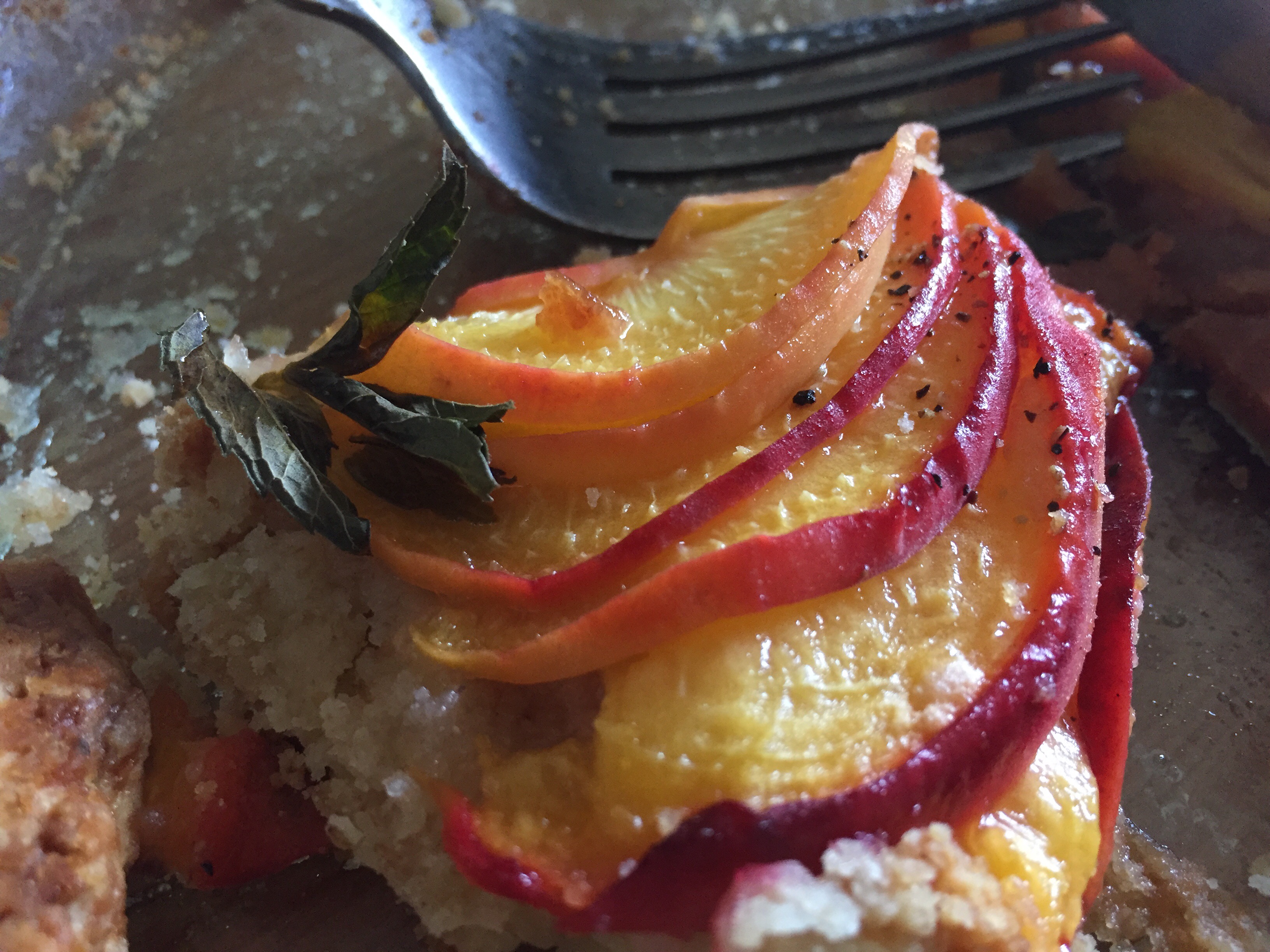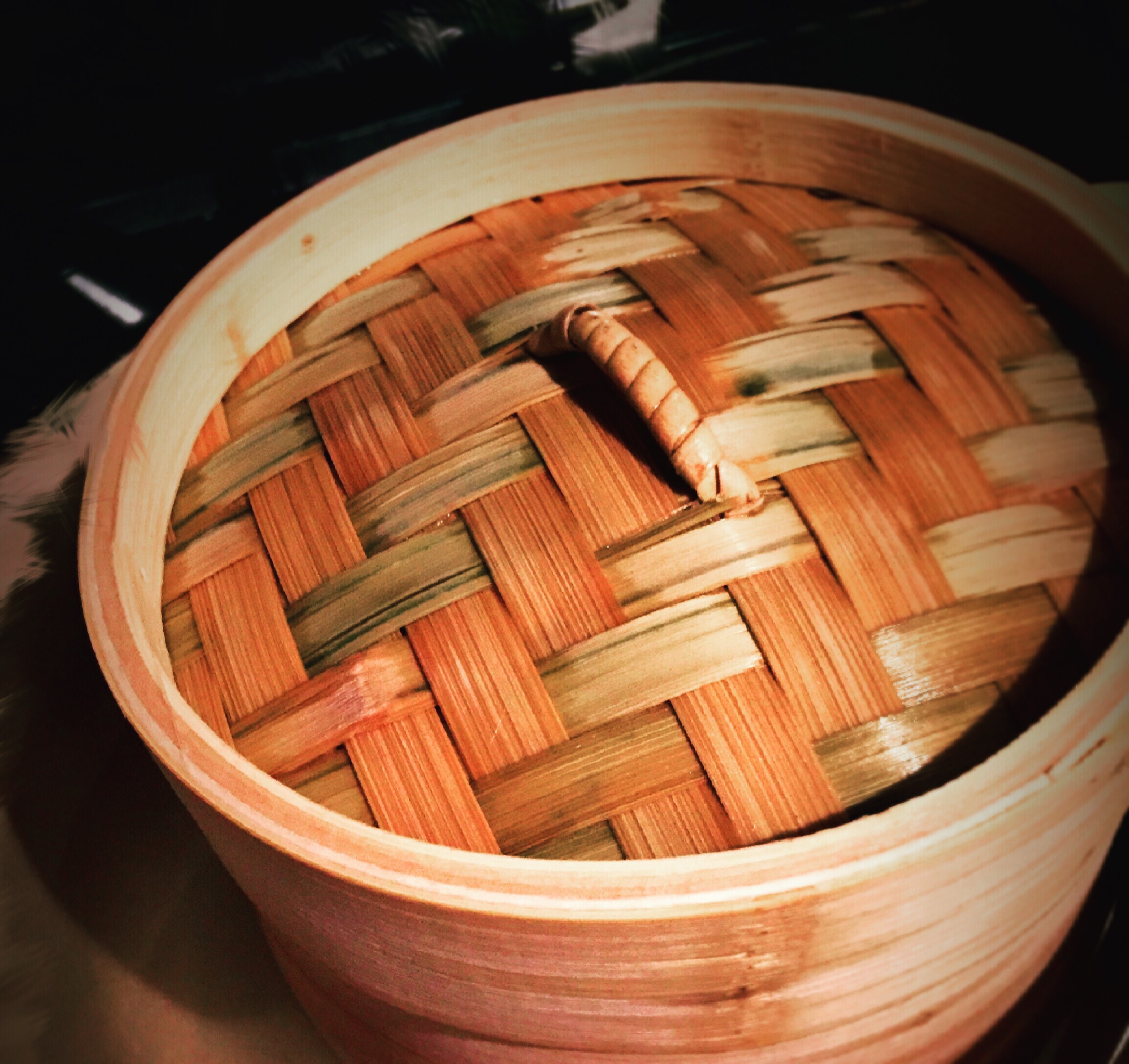Aldis had freeze dried strawberries in the nut section last time I went in.
I have been curious about freeze-dried fruits, and, more specifically, how they would do in granola for about as long as I’ve been into making granola so naturally I bought a bag, combining a crushed handful of fragrant redness with (shelled) pumpkin seeds, almonds, candied ginger, vanilla extract, and honey syrup.
Conclusion: It does right well in granola, though more because the powder clung to the ginger than becasue the chunks are noticeable. Next time I will add less sugar, but for now the strawberries are pleasantly tart and smell heavenly; when topped with chunks of fresh peaches it is divine.

I’ve since used the strawberries, powdered, as a base for salad dressing and as an addition to candied walnuts. I have a little bit left in the bag . . . . maybe something traditional like scones? I haven’t really had time to think about it: for the last 2.5 day I’ve been slogging through the muggy jungles of Marduk in a 1,000 page crawl of the Empire of Man’s opening half. I’m recuperating while my hold requests for the last two books are fulfilled. I do have three other books on my table, all also courtesy of the library (one on loan from a completely different county, using the Marina system. Magic) but, in all honesty, I don’t think I could read another line right now. Not with enjoyment, anyway.
Part of that is becasue all the books I’m reading are just similar enough to start running together. I’ve been kind of on a military sci-fi kick lately – it’s my new whodunit, I guess. For years I loved reading Agatha Christie and Arthur Doyle during the summer but, now that I’ve read a fair number of those stories and sampled a few others in the genre, I’m rather mystery-ed out. Even with my love of formula, between the literally cookie cutter nature of some mystery books, and the inevitable ruins they makes of the characters’ lives, I’m a bit numb to them. I can get my seasonal dose of scandal from police dramas, thank you.Military sci-fi fits in perfectly to the void thus created. The situations are equally convenient, the characters unimportant, and the plot merely a carriage for death, cunningly achieved. At times authors of either genre will wander into arm chair philosophy; the whodunit focusing on the psychological origins of human evil and the military covering honor and death and what the struggle to live means when that struggle includes being willing to lay down your life for an outside cause.
Not that the characters in military fiction are merely bits of wood for the bullets to hit. However, they do sometimes seem so in comparison to longer epics that don’t make battles their primary focus but instead are full of random character dialogue. The Belgariad comes to mind as the best example of this – the characters are the reason you read the book and, when you are done reading it, you feel you know them inside and out. The Belgariad is such a part of me that it’s difficult to not hold other long, drawn out sagas to the same standard of camaraderie, even when they are obviously in a completely different category. And military fiction is a completely different category than Fantasy or Sci-Fi. Instructional rather than inspirational, Military Fiction is for the quartermaster in all of us. It’s about logistics and order in the midst of lack and chaos. That is what I love about it the most: the orderly, detailed unfolding of battle.
But that is also why it occasionally comes across as, well, flat as a cartographer’s masterpiece. Take the Lost Fleet series, of which I’ve waded through three out of six books. The battles are delicately orchestrated to be daring and dangerous while at the same time letting the characters survive without outright cheating death. They are filled with exhaustively persistent reminders that something ten light-minutes away will take thirty minutes to reach you if you’re going at point one light speed.{{1}} [[1]]Or whatever the actual figures are. I’ll admit, my love for a logical world was not strong enough to figure out how soon two ships would come together if they were five light minutes apart and one was moving at 1.4LS and the other at .9LS. The answer was, invariably, “not as quickly as it takes to tell it.”[[1]] If, by the end of the first book, you are not mentally begging for a good ol’ warp drive you have not been reading it closely enough. The human drama element is there – but it is there becasue that is a part and parcel of war and you couldn’t really have one without the other. As such the characters are sometimes conscripted to speak or act in ways inconsistent to their personality{{2}} [[2]]Assuming they were lucky enough to merit a personality in the first place[[2]] but necessary for the moment, effectively killing off any chance of the audience relating to them. This is good, becasue there are only three categories for named characters in war: the doomed, the enemy, and the hero. All in all, it is a wonderful argument for the chain of command and the military mindset and will make you ponder deeply the complexities of waging war in a vast 3D plain. It will get you thinking, but it’s not going to leave tears streaming down your face.
Of course there are military books that have relatable characters as well – L. E. Modestt’s scholar portfolio in the imager universe comes immediately to mind. But even here it is not all the characters. It couldn’t be – too many people die to keep track or care about all of them. And, let’s be brutally honest, no matter how much people are willing to follow a military leader there is something so tragic about them that it is almost impossible for them not to be somewhat isolated in the midst of their troops. They may know the name and backstory of every soldier, but at the end of the day the knowledge that they are sending these men to their deaths will wall their hearts round with guilt. Truly, MF can be almost as emo as a vampire love story. Which, of course, is just another reason to love it, becasue military fiction reminds us, again, that sometimes the hardest of us are also the softest, that it’s rare to have hate without love, and that numbness can only exist where feeling is possible.
I think it’s the juxtaposition of these two concepts – the obsessive attention to niggling detail and the yearning to serve and protect what you hold dear – that really makes military sci-fi. As a culture, we tend to divide things to their basest elements, putting the brain here and the heart there, but this one genre welds them together with spit, wire, and pure grit. This is the-needs-of-the-many level philosophy, where you must constantly weigh the worth of lives today against the uncertainty of victory tomorrow. In a strange way, it is a place in fiction where the hero will always survive but will never truly win, because every time a life is lost he fails. In a world that continually invites you to fall, how can we not relate to the relentlessly battered warrior, who sees his actions time and time again take the life of friend and innocent alike? Perhaps it is as much for the hope they lend – the encouragement to press on despite our despair – and not just for the ingenuity of war that we continue to write and read them.

Incongruous Tart



